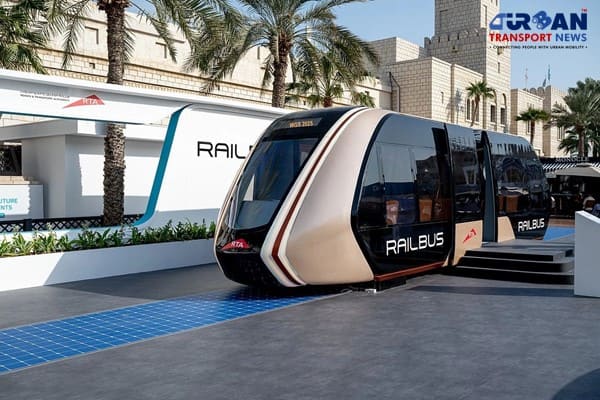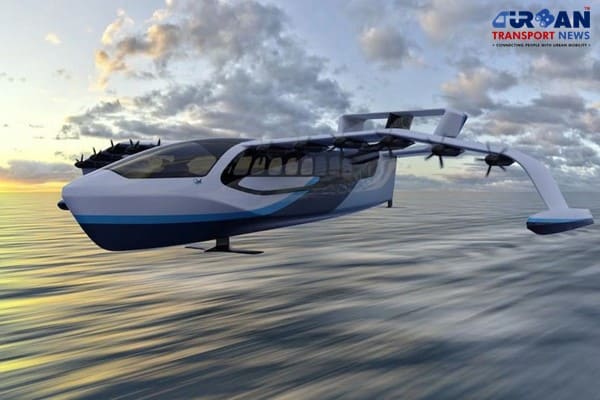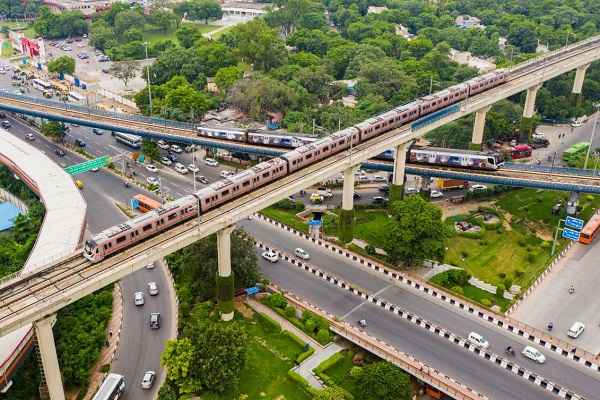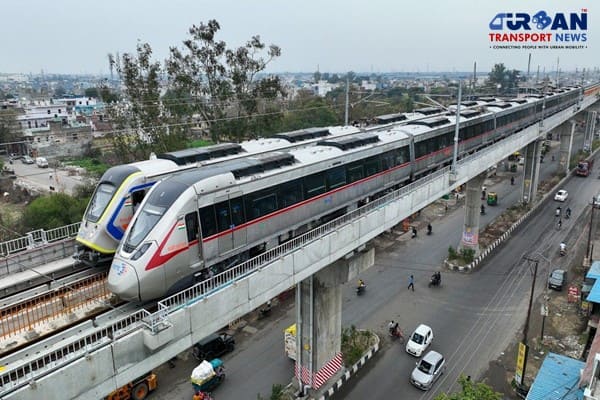 India Makes History: Namo Bharat RRTS and Meerut Metro to Run on Same Track
India Makes History: Namo Bharat RRTS and Meerut Metro to Run on Same Track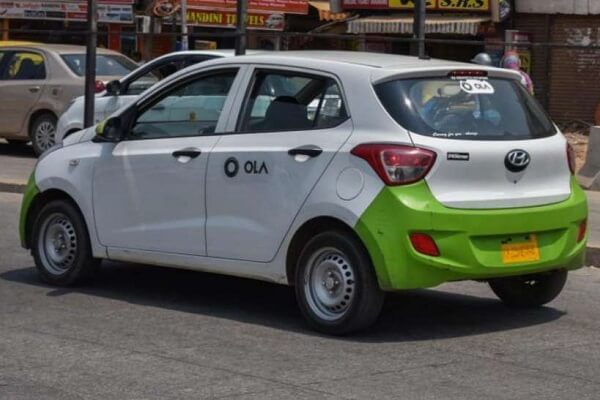 How the Standard for Car and Truck Wheels Is Changing
How the Standard for Car and Truck Wheels Is Changing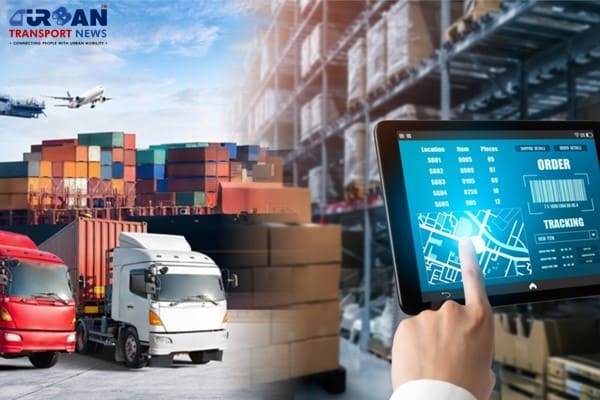 How Cross-Docking Is Reshaping Urban Logistics
How Cross-Docking Is Reshaping Urban Logistics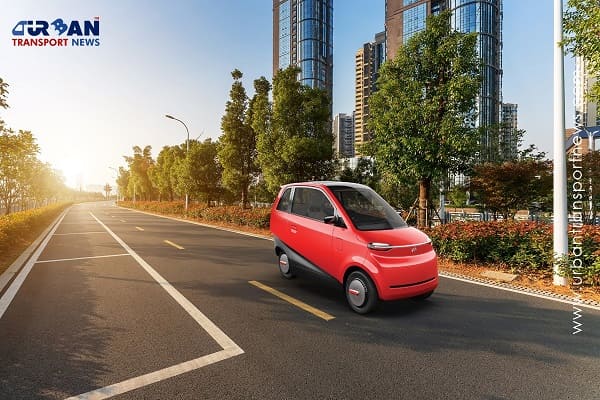 Ola, Uber Fares Set at 50% Minimum; Bike Taxis Legalised Under New Guidelines
Ola, Uber Fares Set at 50% Minimum; Bike Taxis Legalised Under New Guidelines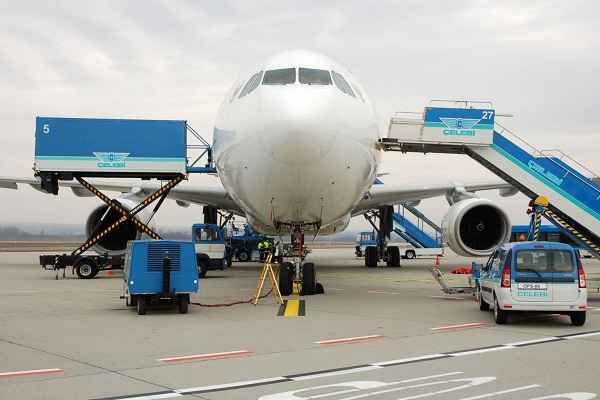 India to review Celebi Aviation contracts amid National Security concerns
India to review Celebi Aviation contracts amid National Security concerns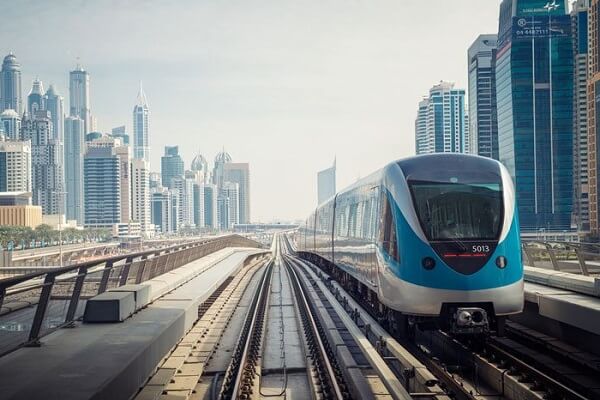 The AI Revolution in Brand Communication: A Dubai Perspective
The AI Revolution in Brand Communication: A Dubai Perspective Tackling Supply Chain Blind Spots with Machine Learning
Tackling Supply Chain Blind Spots with Machine Learning Saudi Arabia issues Design Tender for $7 Billion Landbridge Railway Project
Saudi Arabia issues Design Tender for $7 Billion Landbridge Railway Project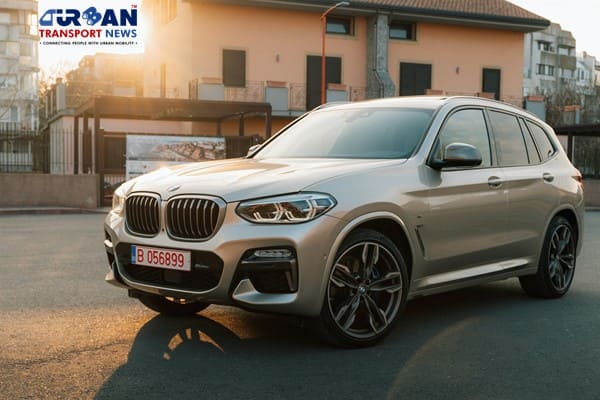 Cab Aggregators to pay penalty for cancellations by Drivers under New Maharashtra Policy
Cab Aggregators to pay penalty for cancellations by Drivers under New Maharashtra Policy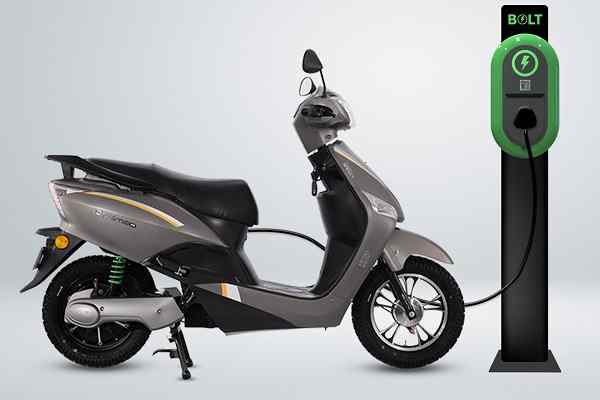 Ola Electric under Fire for allegedly Inflated EV Sales Figures
Ola Electric under Fire for allegedly Inflated EV Sales Figures
Deep Focus: Environmental challenges of urban transport in India
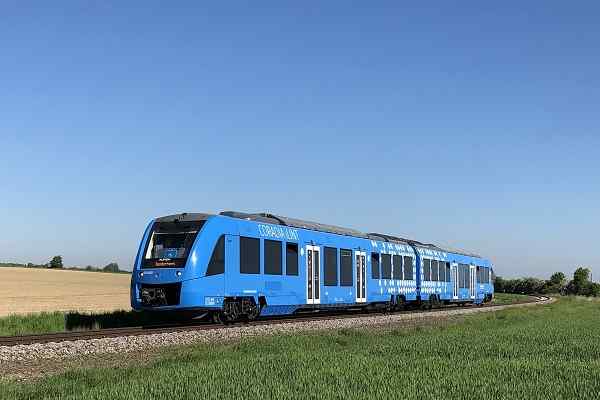
Increased urbanization and increase in people's income during the recent two decades has seen an unprecedented increase in the number of vehicles, but the supply of public transport system and road facilities has been less than its demand. This has led to rapid increase in the number of private vehicles, air pollution, road traffic jam, long travel time etc. Along with this, urban transport is also a major source of energy consumption and air pollutant emissions. When urban transportation, which plays an important role in the development of any city, becomes an enemy of the city's at-air, nobody knows it. In this discussion, it has been tried to understand what are the challenges of pollution from urban transport and how can this be dealt with?
Highlights
- Today around 25 million vehicles are running on the streets of the country. Facilities did not expand in proportion to the proportion of vehicles increased.
- This result is the result of increasing vehicles, that due to traffic, roads and roads in metro cities and big cities have become dirty.
- Road accidents have increased at the national level at the rate of four percent in the last three years. There are more than five lakh road accidents every year in the country.
- The population of cities in India is rapidly increasing and the number of vehicles on the roads is growing faster than it is.
- Compared to the growing population, the lack of adequate public transport system is a major reason for urban pollution, which is also affecting the environment.
- Due to pollution caused by vehicles, there is a decline of 70 to 75 percent in the cropped areas.
- Automobiles and diesel engines lead to smoke, which is believed to be the cause of cancer.
- The number of public transport vehicles is decreasing year by year. Number of buses in total vehicles is only 2%, while 90% of private vehicles are running on the roads.
- In the last 10 years, 80 lakh new vehicles arrived on the roads of the country, while in the 50 years between 1951 and 2001, a total of 70 lakh vehicles had landed on the roads of the country.
- The situation of urban pollution in India is so horrific that all the cities with a population of more than 1 million people are included in the list of polluted cities of the World Health Organization. The number of private vehicles in these cities is growing very rapidly.
- Even after the income of the people increased, the private vehicle is considered 'status symbol' in many parts of the country even today and it is also a cause of increase in urban pollution.
- Experts believe that 'biking' and 'walking' should be encouraged to control urban pollution.
- Make this a 'fashionable statement' so that people are inspired by themselves and they feel that they also contribute to environmental protection.
- Promoting electric vehicles can also be a good step towards reducing urban pollution.
- This danger can also be reduced by generating awareness of the environment. People should be introduced to the magnitude of the polluted environment.
- Progressive increasing dependence on private vehicles is very dangerous for the health of our country's cities. India should learn from the Swedish capital of Copenhagen, which is known worldwide as the global bicycle city.
- In the same way, Singapore also made a policy of 'push and pull' to deal with pollution, in which public transport system was made so strong that people were attracted to it by themselves.
- China has decided to implement the 'Car Quota System' in its big cities to deal with this problem, in which it will be decided in which city the maximum number of cars will be sold per month.
- To tax on cars, India should follow Japan and Singapore, meaning that the tax on cars should be given so that people should think once before buying it.
- In addition to curbing private vehicles, it should be made mandatory that anyone who has a parking space will be allowed to buy the vehicle.
- Peak Hours has the highest number of private vehicles on roads and also the amount of pollution. If 70-80 percent of private vehicle users are turned towards public transport in this period, then some curb can be imposed on vehicle pollution. Similarly, increasing the cost of parking of vehicles in busy work time can also reduce the problem to a lesser extent.
- It has been observed in foreign countries (Paris and London) that when vehicle rates for parking are increased in the weekend, people tend towards public transport. This is called 'demand management'.
- Large companies, where hundreds of thousands of people come to work for their vehicles, if they do their jobs induced for public transport (by giving special allowance etc.), then the number of vehicles on the roads can be reduced.
Potential solutions of pollution from urban transport Air pollution from vehicles is not being reduced in all the metros of the country including Delhi. For its prevention, Indian Railways had prepared a plan to reduce the number of trucks from Delhi streets, which is called Roll On Roll Off (RO-RO). Under this, there was a plan to take the truck passing through Delhi on the goods train and take it out of the Delhi border. For some technical reasons, this scheme could not be implemented in Delhi, but it is being successfully run in Konkan Railway.
BRT With the expansion of Bus Rapid Transit (BRT) in metros like Delhi, traffic problems can be solved and reduction in pollution from vehicles can be done. Of course, the only BRT made in Delhi has been removed, but experts believe that BRT needs to be expanded to distribute the transport, so people will understand its significance. They argue that if Delhi Metro was run for a few kilometers, would it have been successful? That is why a high-level committee formed by the Central Government last year recommended various provisions in BRTS, pedestrian and cycling infrastructure in Delhi at a cost of Rs 20,000 crore. This high-level committee had talked of encouraging public transport by discouraging use of private vehicles by charging congestion taxes, more parking fees. Instead of making better use of existing places on the roads and making more flyovers, this committee also suggested traffic management.
Car pooling Car pooling is a system through which some other people can be included in the route of travel and during which the expenses incurred on petrol etc. can be saved and the number of vehicles on the road can be reduced. . Car pooling in the world first started in the United States to reduce oil consumption during World War II. In India, car pooling is almost non-existent among private vehicle users, but through technology, now the cab (car) pooling has started in the metros. The car pooling business has been taking hold in the Indian market for some time now. Taxi aggregators like Uber and Ola are providing app based car pooling services. With car pooling, the burden of vehicles on the roads is low and pollution from them.
Cars with even-odd numbers Overall, the number of vehicles that are not on the roads of Mumbai, Chennai and Kolkata, move more on the streets of Delhi. In such a situation when the pollution caused by vehicles increased in Delhi, the Delhi government used a new experiment. Experiences from January 1 to January 15, 2016, in the days of the evenings, the numbers of odd numbers were allowed to land on the road in days of even and odd days.
Cycle use Vehicle pollution has compounded a new alternative, which is pollution free and economically cheaper. In this sequence, everyone's attention is attracted to use the cycle as a vehicle. The main reason for this is pollution free, economic easing, rural life to be useful in urban life, increase physical health and facilitate parking. Due to these characteristics, technical experts considered the bicycle as a 21st century vehicle. According to them, cycles can be the only option for making traffic smooth and smooth. The number of bicycles in the world has always been higher than any other vehicle. Today the popularity of cycling in the world is increasing steadily. The World Health Organization has said about the bicycle that it is the cheapest, polluted, easy-to-operate and simple to stand vehicle.
Supreme court's stance on vehicle pollution Seeing the pollution from the vehicles being uncontrolled, the Supreme Court had on April 1 installed the vehicles and notices of vehicles that did not comply with the standards of BS-4 across the country. Then the Justice Bench had said that public health is more important than the business interests of automobile manufacturers. After this, the BS-4 vehicle pollution emissions standard became effective all over the country.
Conclusion Mahatma Gandhi had said, 'This land can fulfill the needs of everyone, but not greed'. Urban pollution is a matter of international discussion today. But its status in the metros of India is frightening and worrisome. Seeing the rising air pollution in Delhi, the Supreme Court has called the city as 'gas chamber'. To make cities / metropolis pollution-free, the most needed is to make public transport system alert, so that ordinary people use them instead of using their vehicles. Such systems have been in prevalence in most developed countries of the world for a long time, consequently the problem of pollution is also low in those countries.
If there is a proper arrangement of public transport and they are operated smoothly, then gradually a culture will evolve, people will leave their vehicles and use them, and when this starts to happen then there will definitely be a reduction in the amount of pollution.





